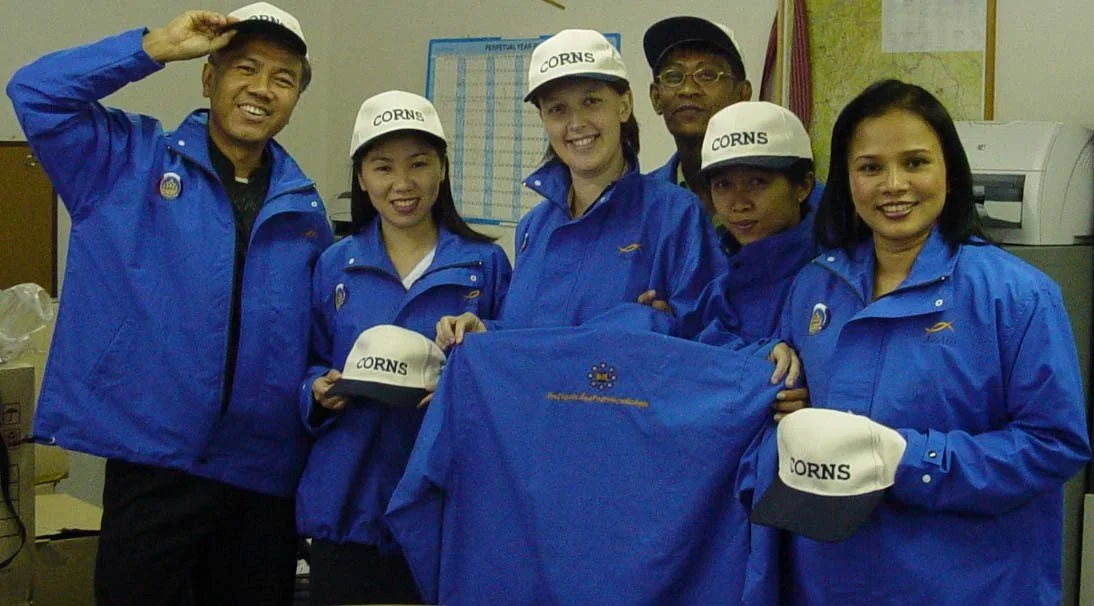Twenty years of development and communications: What’s changed, what hasn’t and where to from here
By Lisa Ritchie, Communications Strategist and Founder of EngagingDev
Twenty years ago, I mailed a heavy envelope from a post office in Bangkok to RMIT University in Melbourne. Inside was my master’s thesis on the value of well-thought-out communications plans for bilateral development programs.
The central premise of my research was simple: development programs stood to benefit from better, more strategic communications designed to support program goals. However, more needed to be done to demonstrate that value to donors, and to ensure communications was properly resourced and professionally recognised.
Then vs now
Fast forward 2 decades, and communications in development has come a long way. It is now more likely to be resourced (we get paid!) and the rise of social media and the growing emphasis on public diplomacy has played a key role in this shift.
But challenges persist. Communications is still sometimes treated as an afterthought or a cosmetic add-on rather than as a core function that drives engagement, trust, influence and outcomes. And it’s still too often seen as something anyone can do. The strategic value of communications has not been fully appreciated or realised as I discuss in this blog: Beyond the good news: Why strategic communications in development matters.
Things are better, but the sector is still learning.
A hustle-filled beginning
Above: Back in the days of CD-ROMs, big desktops and phones that didn’t take photos!
When I returned to Australia after submitting my thesis, I was fortunate to continue working in development. But communications roles were rare. Programs usually brought in communications support when they wanted a newsletter or a website – and it was often volunteers who were given these roles. The idea of embedded, strategic communications had not yet taken hold.
So I did what many others in this field have done: I hustled. I volunteered to write stories, publish newsletters, drafted communications plans and strategies where I thought they were needed, took photos, and later, built websites and managed social media – all while working in other roles. Any opportunity to contribute to communications, I took it.
Shifting expectations
The sector has evolved. Visibility matters to both the public and policymakers. Donors now expect communications that serve multiple purposes: informing, engaging and showcasing value. They want Facebook posts and public engagement opportunities. I’ve seen program evaluations cite communications as critical to a program’s success and some programs now even have end-of-program outcomes directly linked to communications embedded in the program logic.
But old habits die hard. Ad hoc requests and reactive communications still surface. And there’s still a gap between recognising the value of communications and truly embedding it in program strategy, staffing and budgets.
Lessons learned
With 20 years of hindsight, here are some lessons I share with anyone working in or with communications in development programs:
Balance public diplomacy contributions with strategic communications efforts. Public diplomacy is important to donor visibility. Strategic communications is important to program success (see Public diplomacy and strategic communications are not the same: and it matters).
Involve your strategic communications specialists from the outset. They will help shape brand, messaging and reputation. They will help manage risk, build partnerships and facilitate change.
Monitoring and evaluation and communications must collaborate, but don’t conflate the two. Strong communications relies on evidence and it also generates evidence. Your communications team must also be able to ‘real-time.’ A strong communications team will anticipate the response required ahead of time.
Being trusted to tell someone’s story is a privilege. Communications carries responsibility. Respect matters more than a narrative goal or visibility metric.
Not everyone is a communications expert. Strategy, messaging and storytelling are learned skills, just like data analysis or finance – not everyone can ‘do communications’.
Not everyone is a designer either. Visual communications is a specialty. Subjective opinions shouldn’t override design intent.
Budget for communications from the beginning. Strategic and quality communications require planning, resourcing and professional expertise.
No one can do it all. Good communications specialists are versatile, but most aren’t experts in everything. Spread the load across a team of in-house and external providers. And budget for this.
The thesis holds up
So, do the findings of that thesis still apply? Yes.
We now have more evidence of the value of communications to the success of development programs. The confusion and wavering relevance I observed 20 years ago has diminished. Communications is no longer a ‘nice to have’, but a ‘must have’.
But there’s still work to do. We need to move from recognising communications as valuable, to embedding it as vital. We need wider understanding of what ‘good’ communications looks like and how to develop and execute a communications strategy. We need to recognise that communications is not just a program output, but a valuable input that, when done well, will support development program delivery and impact.
And I’ll be here, thesis long since mailed, still pushing for it.






